Just as the princess in Hans Christian Andersen’s fairy tale proved her royalty through her sensitivity to a single pea, my adventure in Amsterdam’s Vondelpark had its own royal twist—discovering the curious coot.
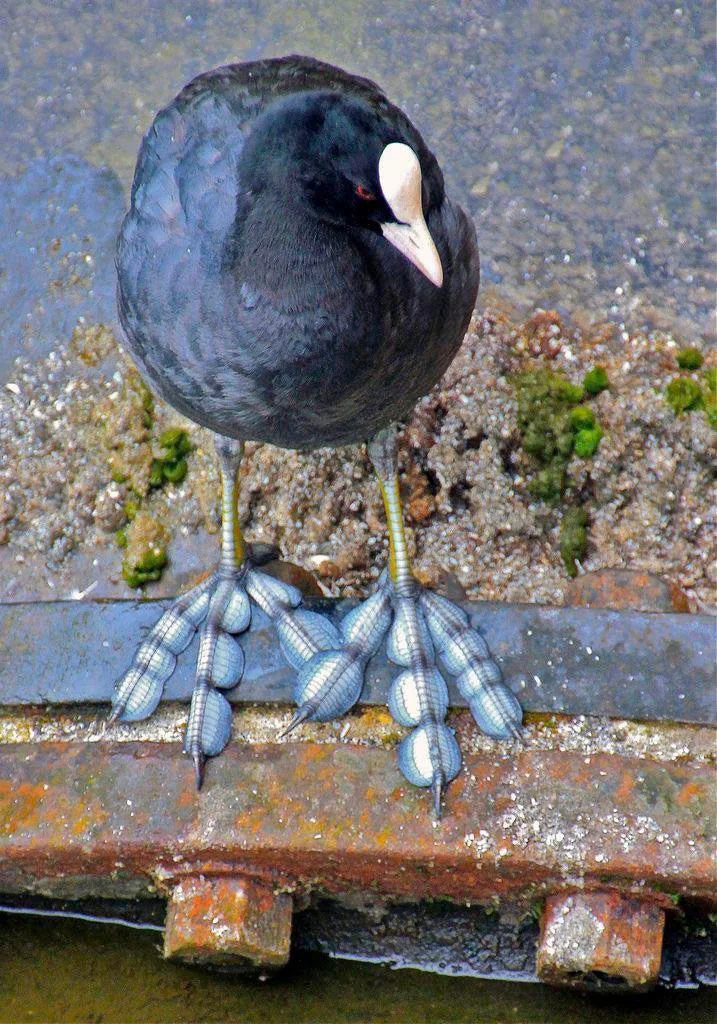
Unlike the delicate princess, these coots, with their prehistoric charm and striking features, reminded me very much of dinosaurs and added a touch of wonder to my trip. The first time I saw their oversized webbed feet and sunscreen-white heads, I thought I was hallucinating or suffering from heat stroke. 🦖
“That’s an animal? That can’t possibly be real!?” I thought to myself. 🫢
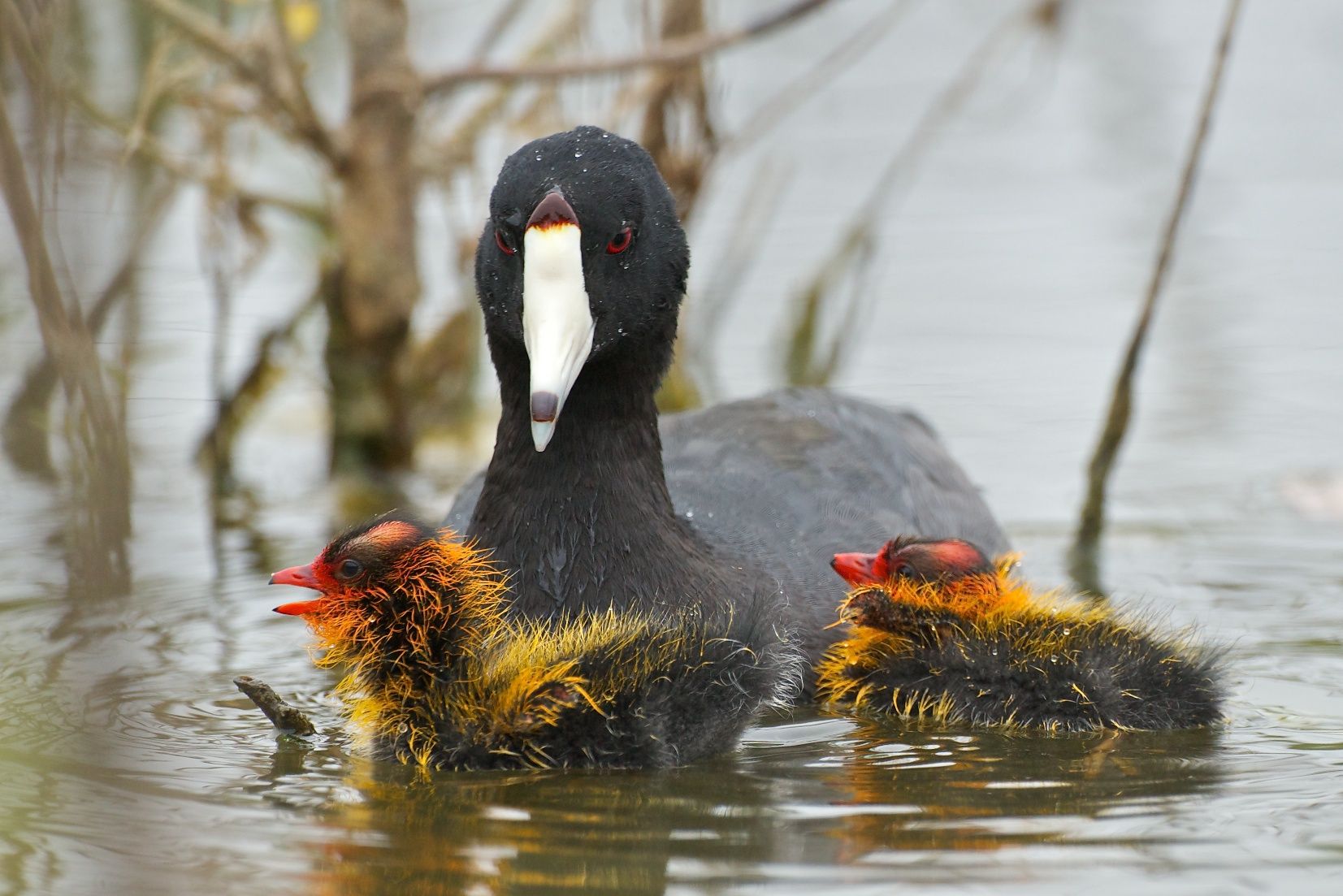
“What is that? Is that a duck?” I asked as I leaned down to get a closer look at a mother coot floating along the pond with two or three baby coot chicks.
The Unique Appearance of Coots
Coots are intriguing birds with distinctive looks that reminded me of prehistoric creatures, leading me to coin the term “Dino Duck” before learning what they truly are. Their blackish bodies and striking white beaks set them apart from the typical ducks I was familiar with. Their heads, in particular, had a prehistoric charm, almost dinosaur-like, making them fascinating to observe.
Coots are cute!
I knew I needed to get a closer look. Fortunately, they were everything and very easy to come by!
I guess that’s why the Eurasian coot is also known as “the common coot.” 😅
The Quest to Feed a Coot 🫛
During my visit to Amsterdam, I had the delightful experience of exploring Vondelpark, a beautiful urban oasis in the heart of the city. One of the most fascinating discoveries I made there was the coots, an unusual bird that I’d never seen or even heard of before this trip.
Being passionate about birds, I was determined to feed a coot. Andy and I researched to find out what foods would be safe for them. While it’s generally not advised to feed wild animals, we were careful to avoid unhealthy options like bread. Our research indicated that peas are a safe choice for birds like coots.
Armed with this knowledge, we headed to a local supermarket, bought some peas, and went back to Vondelpark to try our luck. Unfortunately, our initial attempts were not very successful. We tossed the peas towards the coots, but they seemed uninterested. It was a bit disappointing, but the effort was still worth it.
An Unexpected Encounter
While we were trying to feed the coots, a group of unusually large ducks suddenly appeared. These ducks were taller, with big bodies and white/tan feathers. They quickly swarmed us, drawn by the peas, but lost interest just as quickly when they realized it wasn’t their preferred food. It was a hilarious and unexpected moment that added to the day’s adventures. 😂
In this video, you can see the invasion for yourself:
I found out today that these were Egyptian Geese!
Half duck, half goose, and 100% reminder of the fact that birds used to be dinosaurs. Egyptian geese have made the parks and waterways of Amsterdam their home in recent years. Thankfully, they’re not nearly as aggressive as Canadian geese.
I also saw a much more familiar looking duck, which I was able to go for a short walk alongside during this special little encounter:
It was relatively easy to feed peas to the ducks. 🦆
A Moment of Success 🎉 I Fed a COOT
Despite the initial setbacks, I didn’t give up. We moved to a different spot in the park, and finally, I caught the curiosity of a coot. I succeeded in feeding it peas, achieving my mission. 🎊🫛
Andy was there to help capture this special moment, and it was incredibly rewarding to see the coot enjoying the peas.
Observing Coot Behavior
Apart from feeding them, watching the coots’ behavior was fascinating. They have a unique way of almost running on water with their lobed toes, which adds to their prehistoric charm. Their strange yet captivating movements were a joy to watch. 😍
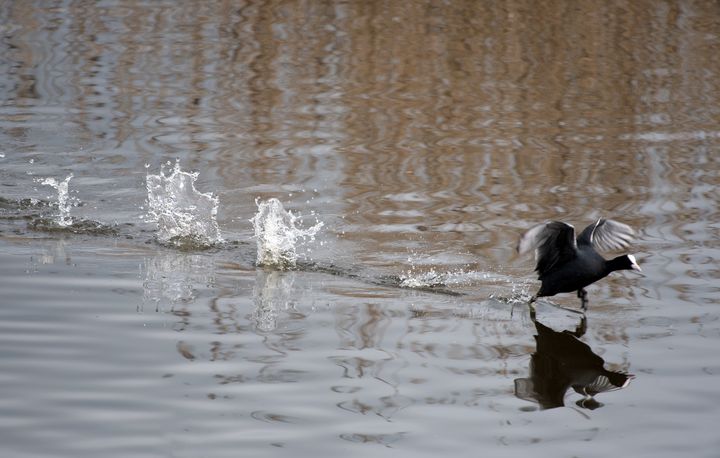
Like their American coot counterparts, in the water, the coot doesn’t just use those big feet for propelling itself; they are also important for getting airborne. To take flight, the birds run across the surface of the water and furiously flap their wings before they lift off. The fleshy lobes are good for tussling, too.

They also have a pretty intense way of fighting for territory and mates, and you guessed it… it’s all with their monstrous feet.
Interesting Facts About Eurasian Coots
- Distinctive Appearance: Eurasian coots have a glossy black head and neck with a lighter, slaty black body. They are easily recognizable by their white bill and facial shield, which gives rise to the phrase “as bald as a coot.”
- Unique Feet: Unlike ducks, coots have lobed toes rather than webbed feet. These lobes help them to swim efficiently and also allow them to run across the water’s surface, which is a fascinating behavior to observe.
- Diet: Coots are omnivores, eating a mix of aquatic plants, seeds, algae, snails, insect larvae, and worms. They can also forage on land, making them quite adaptable to different environments.
Embrace the Unusual 🤪
My encounter with the coots at Vondelpark was one of the highlights of my trip to Amsterdam.

These “dino ducks” introduced me to a new and fascinating aspect of birdlife. If you ever find yourself in Vondelpark, take a moment to observe these unique birds. You might even try feeding them some peas and enjoy the same sense of wonder I did.

Stay tuned for more stories and reflections from my travels, and remember to be nice to birds everywhere you go. 🦆🫶


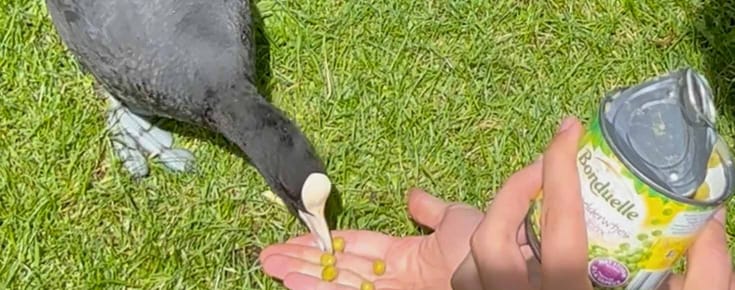

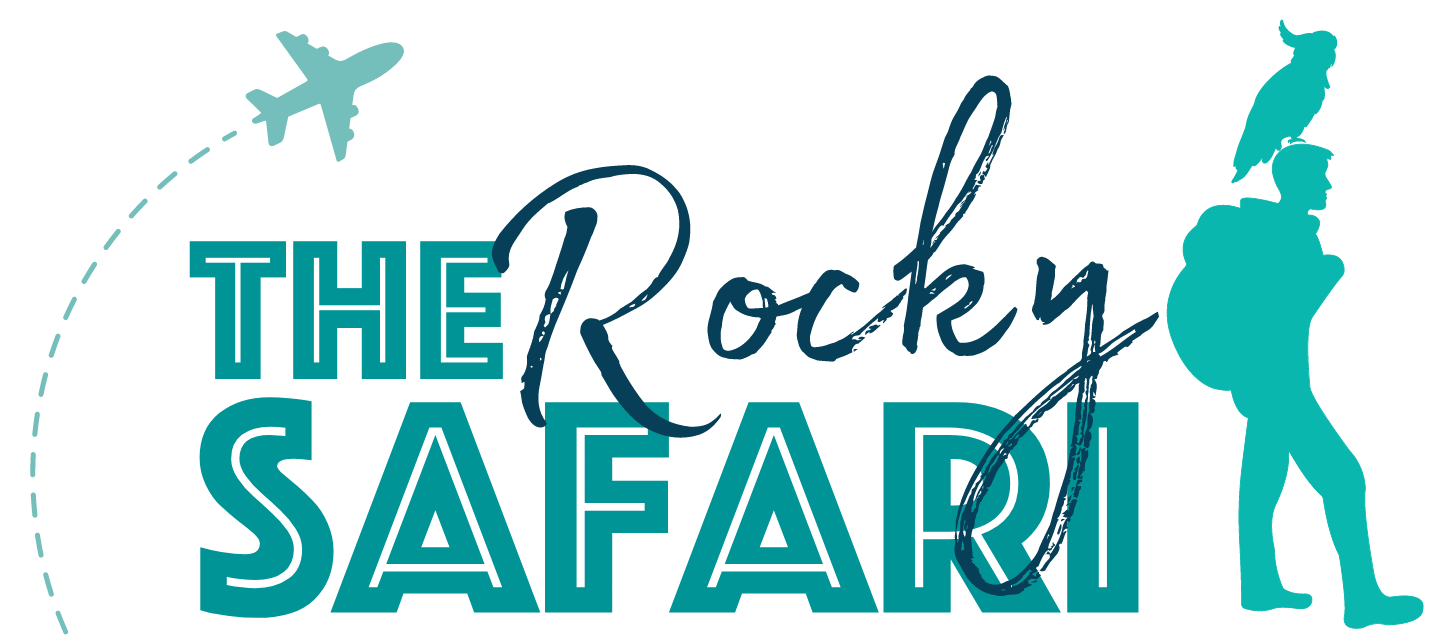
I’ve heard of coots, but I’ve never seen one in person. They look so funny! What got me waa how comically large their feet are. It’s always fascinating to discover unique species during our travels!
That was my favorite aspect too! Or how they run on water. 😂 Totally agree with your Rebecca, it’s a great feeling to encounter interesting new animals.
What an interesting looking bird! I had never heard of them before.
I had never heard of coots either! Apparently there is an American version of the Eurasian coot, but I’ve never seen it or heard of it prior to finding these guys in Amsterdam!